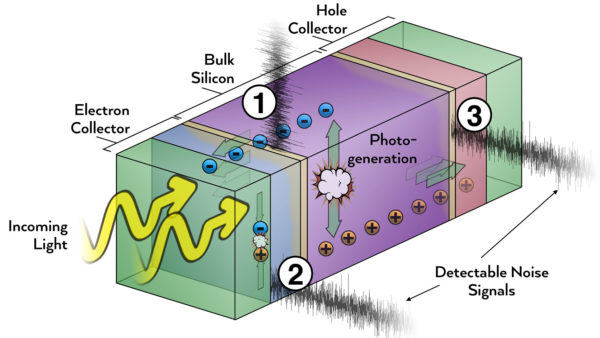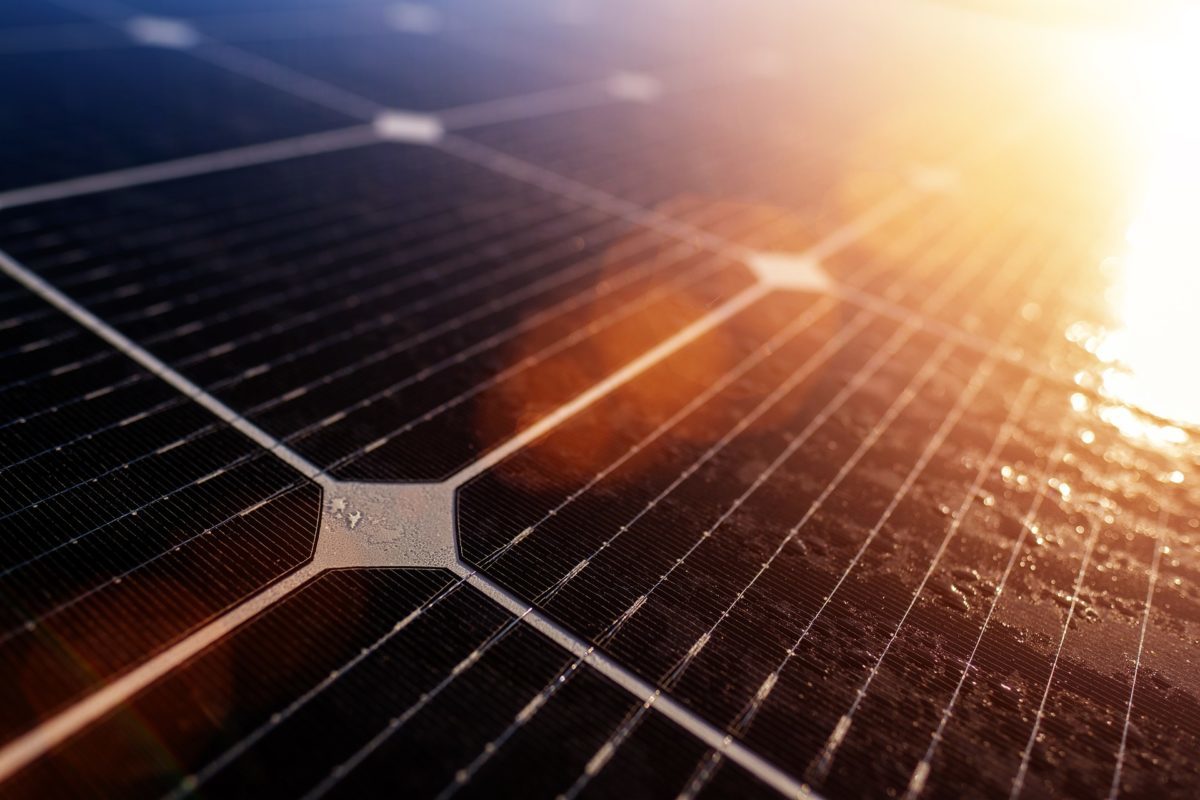Physicists at the University of Utah and Helmholtz-Zentrum Berlin used a method called cross-correlation noise spectroscopy to detect small fluctuations in electrical current running through a silicon solar cell.
The technique allows researchers to pinpoint where cell inefficiencies and energy losses occur.
Using noise to detect disturbances is not novel, the physicists said, but one problem is that noise-detecting devices create noise of their own. This is where the cross-correlation method steps in. It uses multiple detectors so that the noise of the sound detector can be analyzed and removed. That way, only the noise signals being looked for within the cell are detected.
Heterojunction solar cells (HSC), high-end single-material solar cells, were selected for this study. HSC has one of the highest known efficiencies, capturing about 26.7% of energy in light, compared to the 15%-20% typically found in a residential solar panel.

Image: University of Utah
The researchers said that a key to creating a highly efficient HSC panel is to ensure that all the layers are in alignment, so that there is a match between the photo-active silicon and the selective electrode. A misalignment of these ultra-thin layers means that defects can trap electrons, thereby negating overall output.
The physicists likened trying to find the small noise signal to hearing one note in a chorus of hundreds of people, as a lot of interference needs to be filtered.
Once they successfully cross-cut the extraneous noise and isolate a noise signal inside the cell, the researchers could work backwards to understand the material that the physical process came from. They said that identifying the physical process noise itself is like discovering a musical note, and then studying its properties to determine what instrument it came from (in other words, the material and its properties).
The research identified two main areas where efficiency was compromised by imperfections. One was caused by the transparent layer that sandwiched five solar cell layers, called the ITO. The ITO modifies the underlying silicon layers, creating defects. A second process occurred when electron holes passed through a similar barrier on the back side of the device.
The physicists said that their method, and the implementation of more layers and a higher range of materials, could allow solar panels to break through the elusive 30% efficiency barrier.
The research at the University of Utah was supported by NSF and at Helmholtz-Zentrum by DFG.
This content is protected by copyright and may not be reused. If you want to cooperate with us and would like to reuse some of our content, please contact: editors@pv-magazine.com.









By submitting this form you agree to pv magazine using your data for the purposes of publishing your comment.
Your personal data will only be disclosed or otherwise transmitted to third parties for the purposes of spam filtering or if this is necessary for technical maintenance of the website. Any other transfer to third parties will not take place unless this is justified on the basis of applicable data protection regulations or if pv magazine is legally obliged to do so.
You may revoke this consent at any time with effect for the future, in which case your personal data will be deleted immediately. Otherwise, your data will be deleted if pv magazine has processed your request or the purpose of data storage is fulfilled.
Further information on data privacy can be found in our Data Protection Policy.